It was a house with a view. I noticed the potholes in the driveway, the old sheds tucked into the trees, the railroad tracks just below the hill of the house, and why is there an old semi truck parked by the garage shed?! But all I could look at was the view—it was spectacular! Our Airbnb house for the Duluth wedding weekend sat on a hill overlooking miles and miles of Minnesota and Wisconsin forests. Somewhere below our sight line was the St. Louis River we had followed at Jay Cooke State Park earlier in the day. The Superior Hiking Trail and the Willard Munger State Trail wound through the trees in our view. The evening colors were rich and dusky as I stood on the deck and the sun dropped below the horizon. There was much to see and nothing to see in the vast forest that lay below us—much like the far-reaching prairies of the Dakotas that I love.
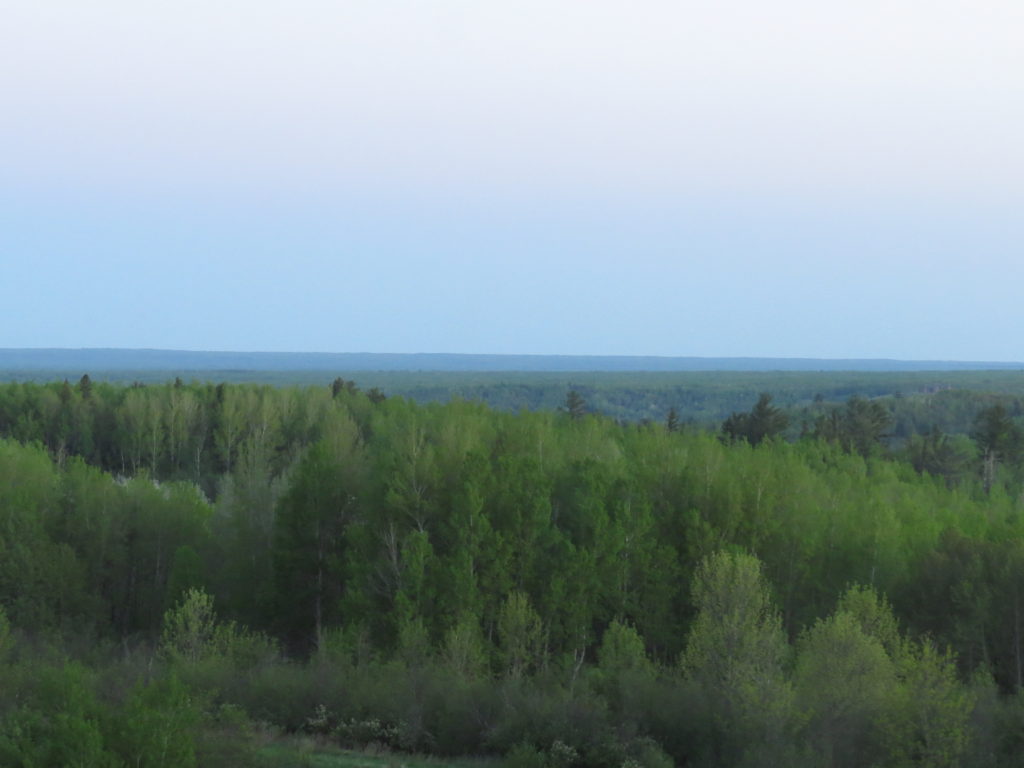
The house was compact yet roomy, comfortable, and nicely laid out, with seven large windows that allowed the big view to dominate the inside space. The color of the sky and trees had changed and brightened in the morning light. I couldn’t help but feel it was going to be a very good day!
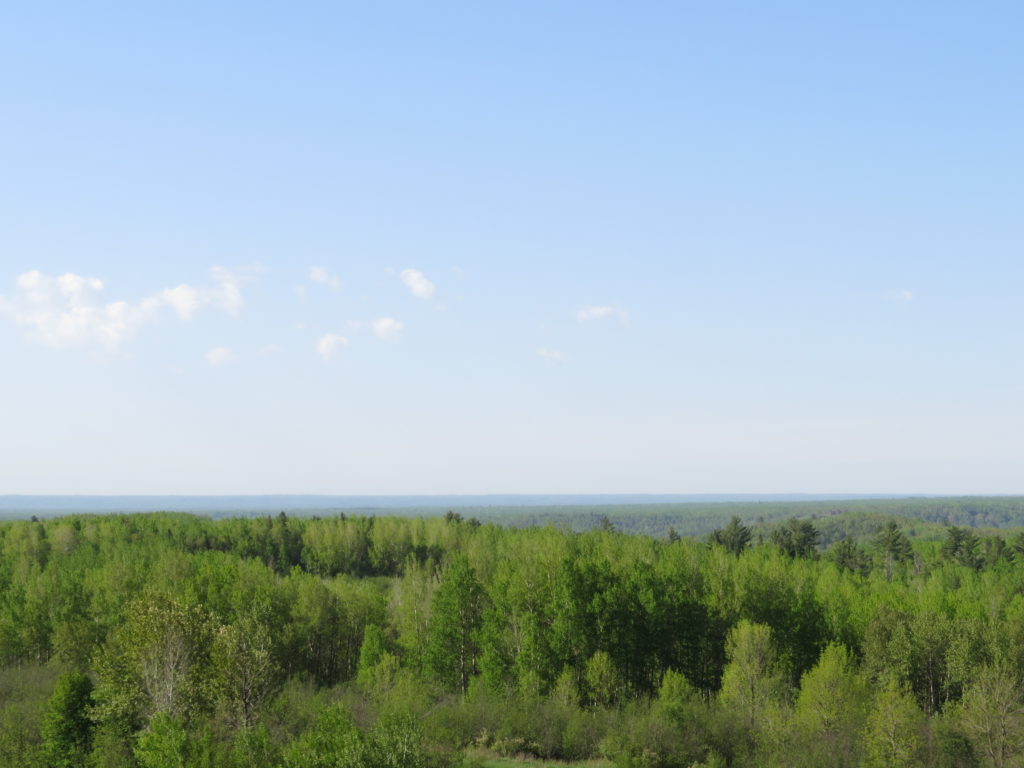
We left Chris with the sunshine and the view—gratifying manna in its own right, and all one has to do is sit there, let it in, and allow it to heal and feed the body and soul. Passive rejuvenation. The rest of us walked down the gravel driveway lined with brilliant white Trillium flowers I had not noticed the day before. Had I missed their beauty as I noticed the potholes?
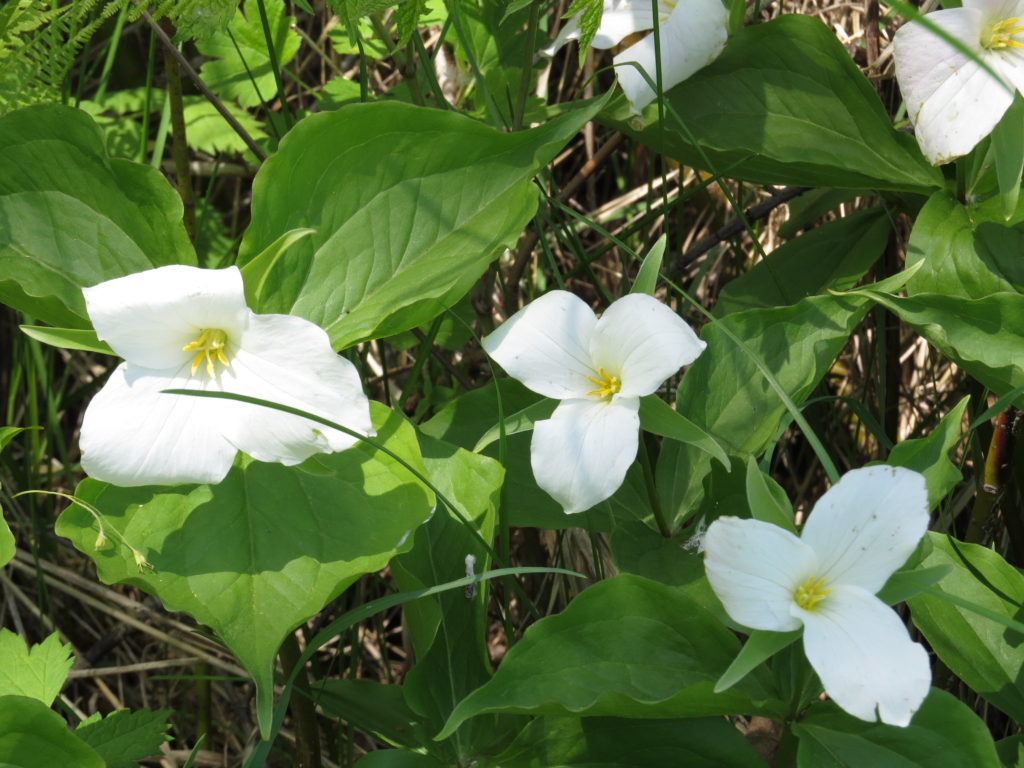
Fifty yards or so from the driveway was the parking lot and entrance for Mission Creek Parkway hiking and mountain biking trail. We crossed a bridge over the railroad, then another over the state bike trail and were soon on the path down a long, gradual slope. We had stepped backwards into Spring—the ferns were freshly unfurled and the trees were newly-leaved, casting a yellowish–green glow from the sparse canopy.
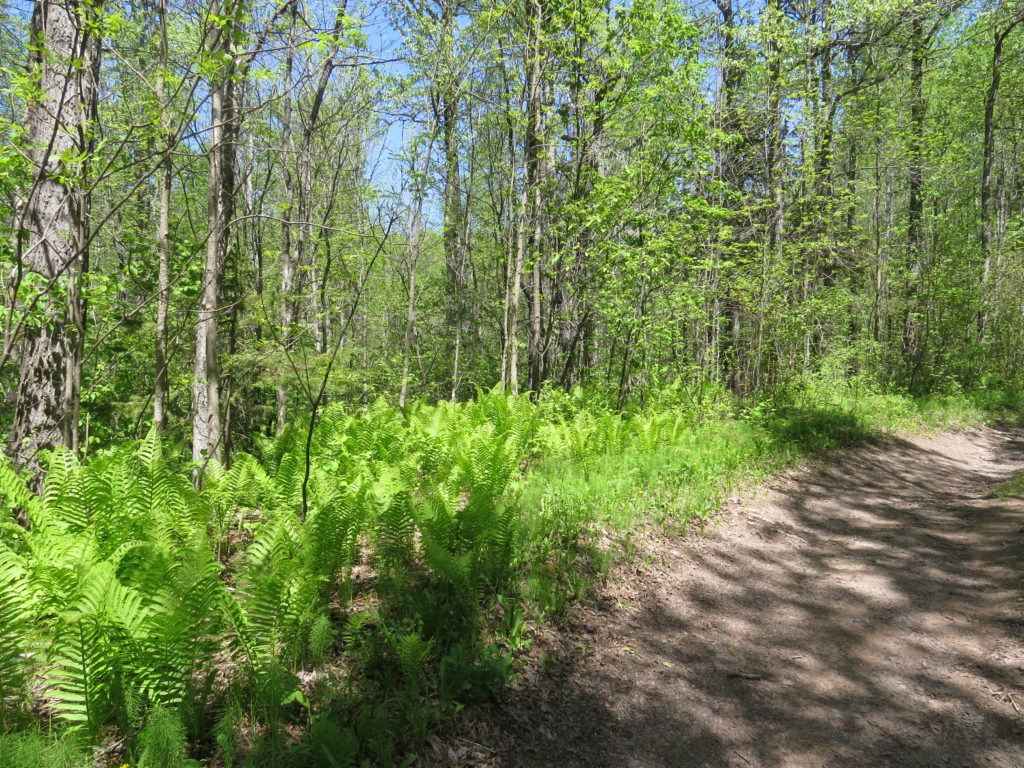
We continued down the slight slope until we reached a creek—Mission Creek—that meandered across and alongside the trail. After the big waters of the Mississippi and St. Louis Rivers and of course the almost infinite waters of Lake Superior, this small body of water seemed insignificant. Boulders and large rocks were scattered along the waterway creating its own tiny twist of bubbly rapids—trivial compared to the churning, voluminous rapids of the St. Louis River.
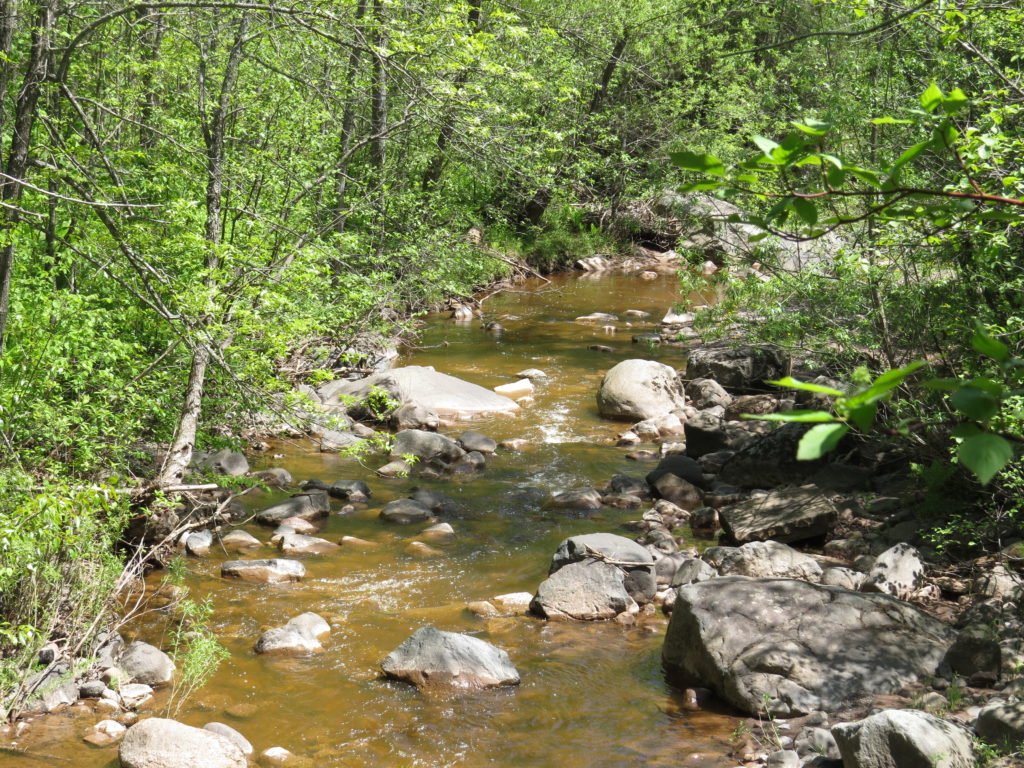
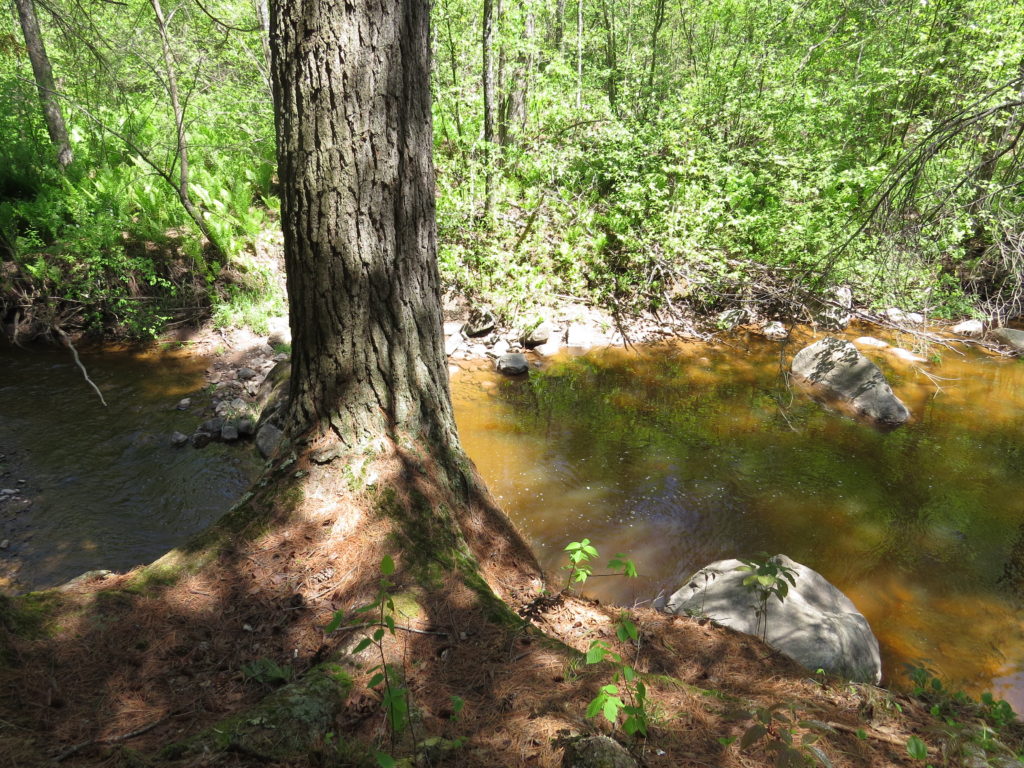
The water was brown with tannins, just like the big waters, but shallow and transparent. Waterplants lazily floated with the current, and minnows darted about, their shadows darkening the sienna mud bottom.
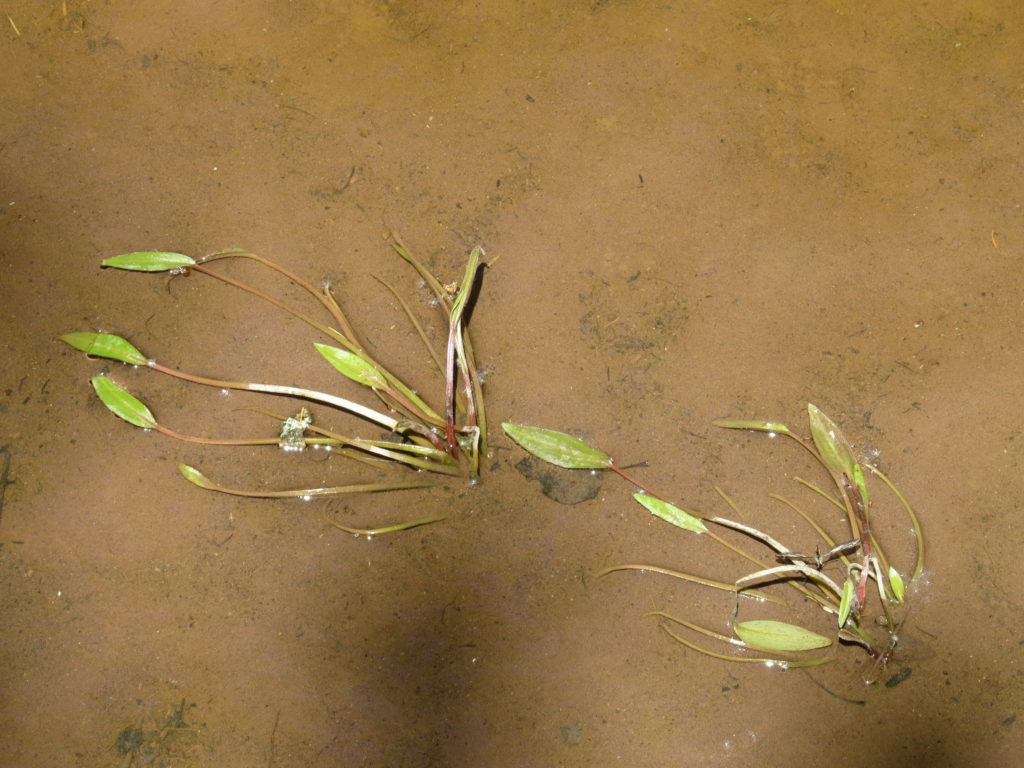
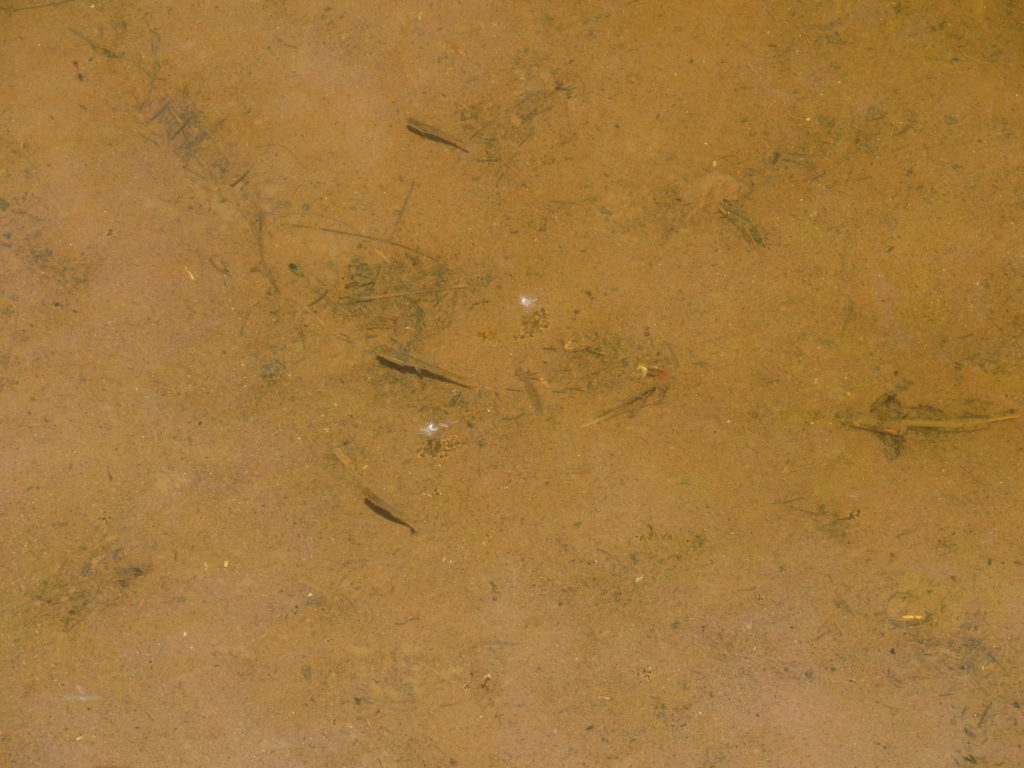
Wispy yellow-green beards of Meadow Rue flowers shook in the breeze, scattering the pollen in the hopes of germinating another woodland plant. Tender Blue Violets surrounded the spikey ball flowers of Wild Sarsaparilla (said with a cowboy’s western drawl, of course.)
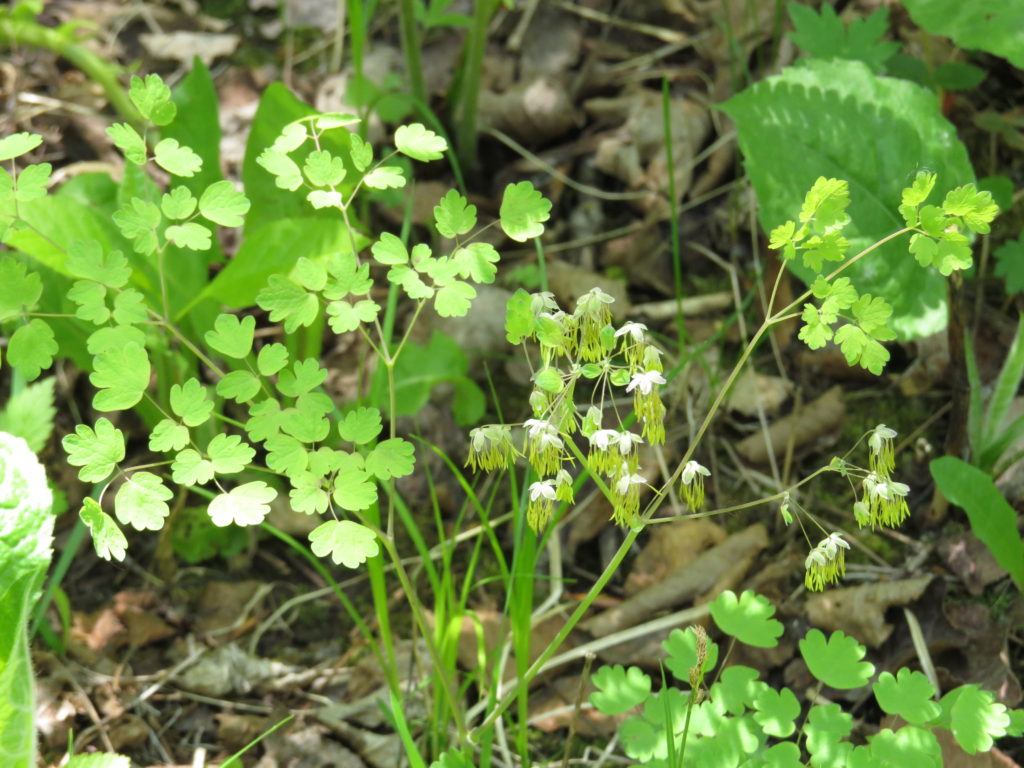
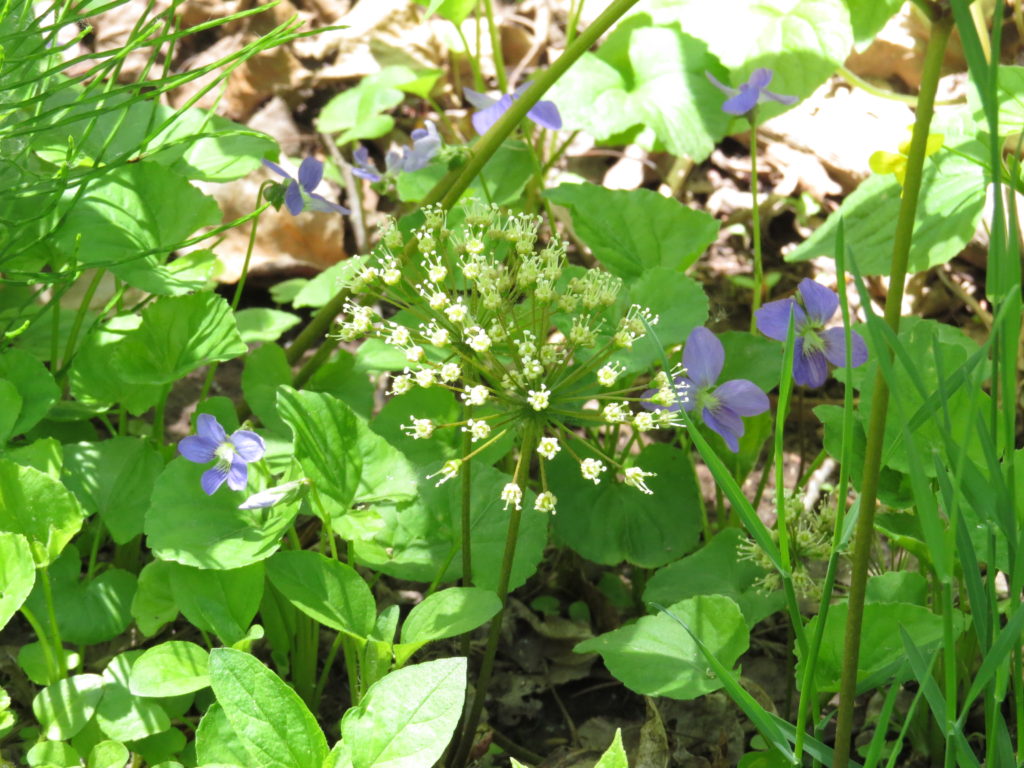
The longer we followed and crossed the little creek, the more it became evident that it was a life-giving and life-supporting body of water, no matter how small. River Otter tracks led down from an old stone bridge through the mud to the water.
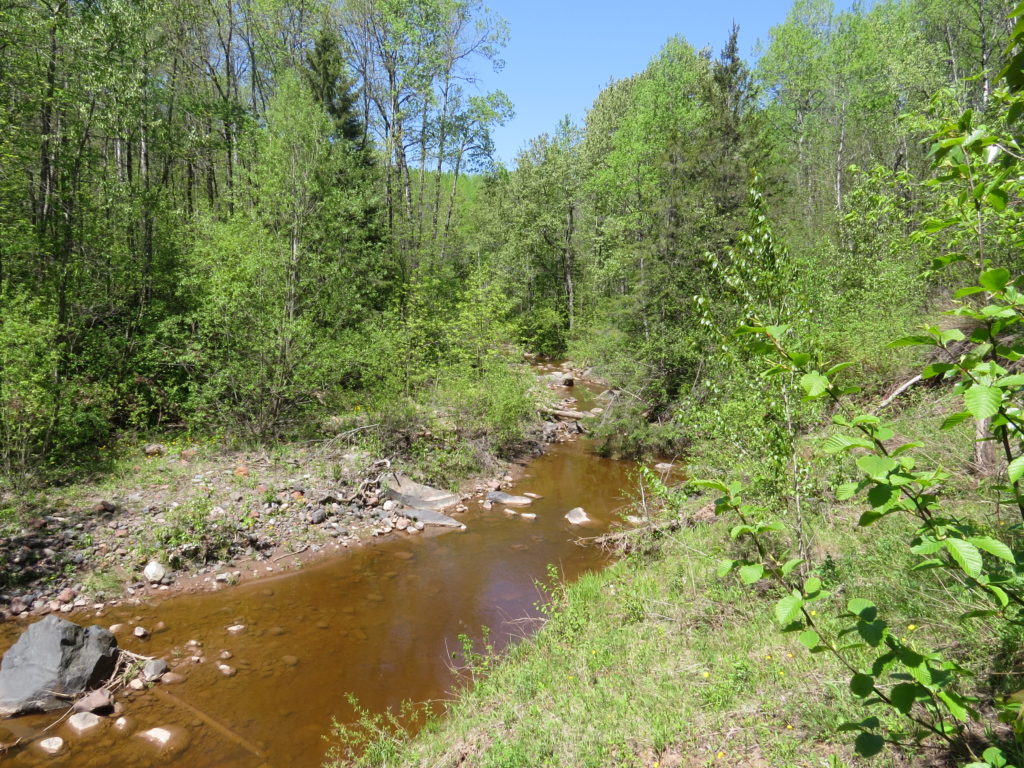
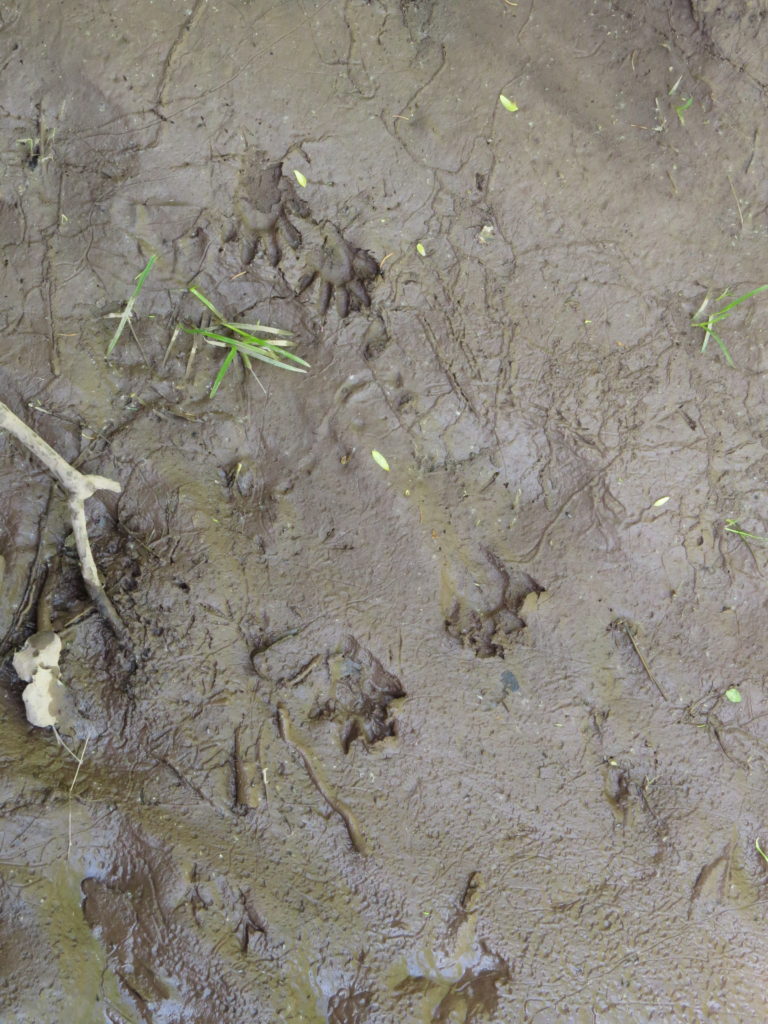
Thimbleberry bushes with their bright green palmate leaves grew along a sunny path, and in a couple of months, will produce ruby red domed berries.
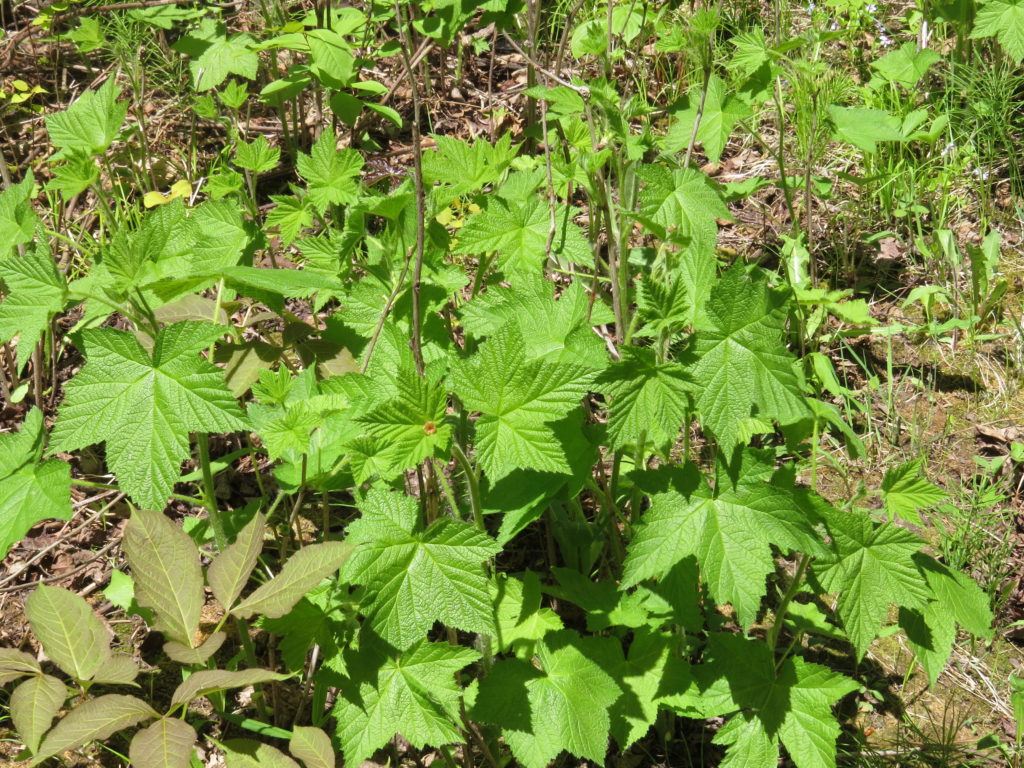
Mosses remind us of how small things are important in the big view of life.
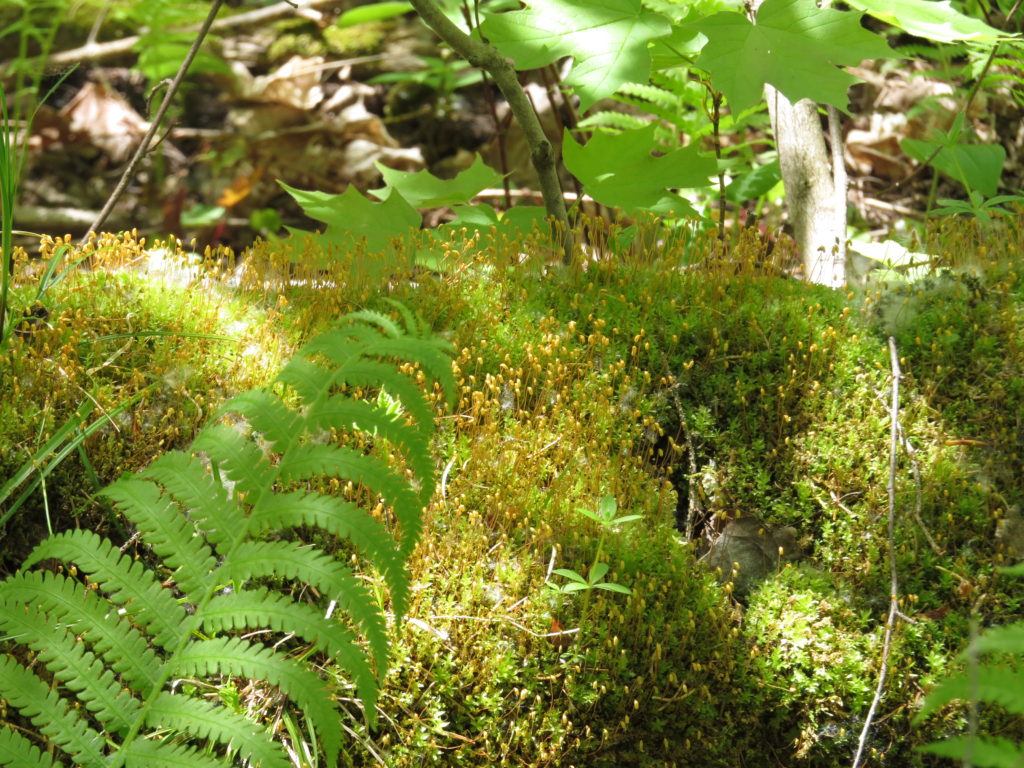
We left the small waters of Mission Creek and returned to the big view of our weekend dwelling. I saw a huge log building that I didn’t notice among the trees in the miles and miles of forest, and later found out it was a resort in Wisconsin. (Hidden in plain sight.)
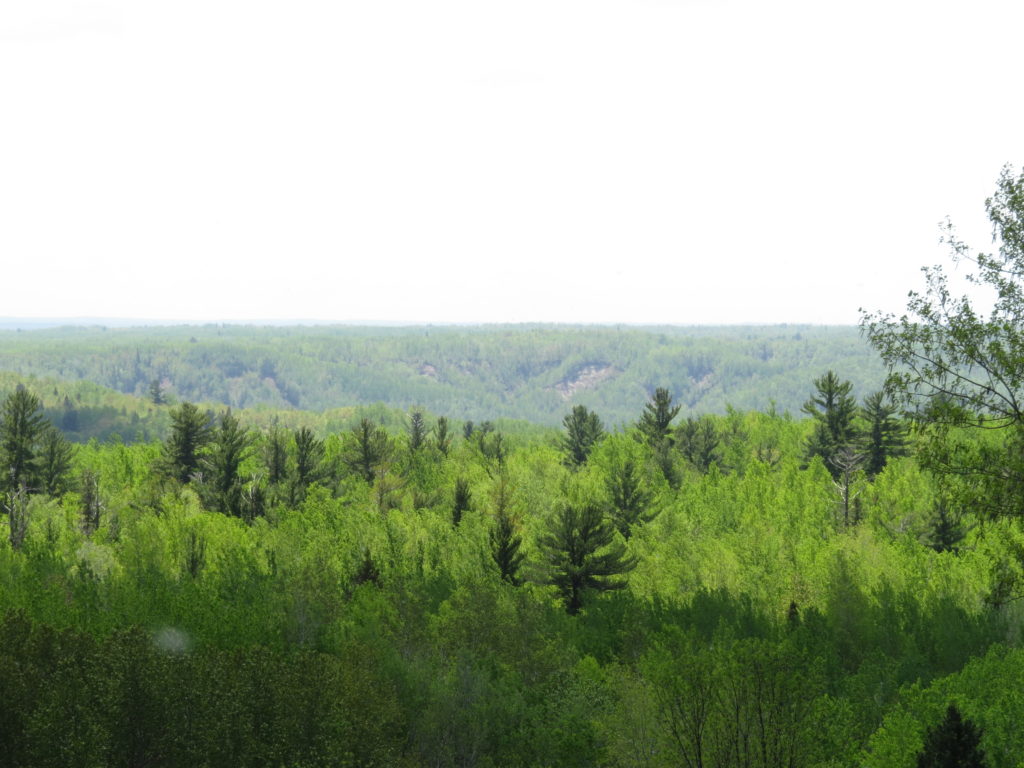
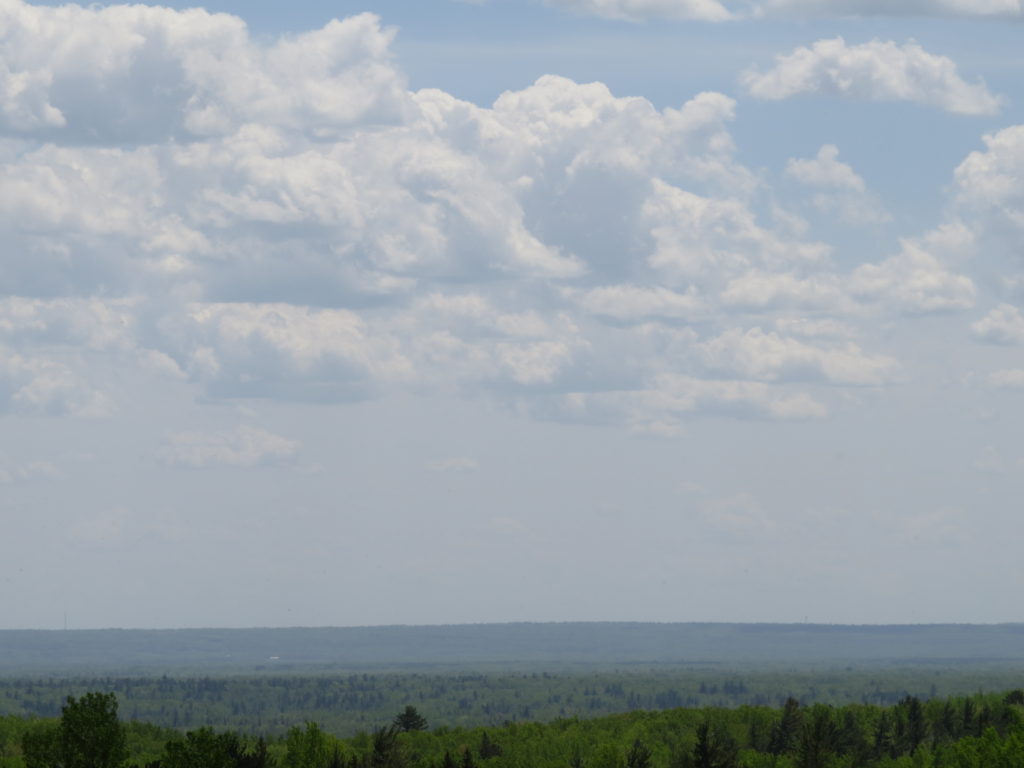
On our last morning, a deer grazed around the railroad tracks as I watched from the windows—and soon she saw me. She lived in the big forest and was a patron of the small water of Mission Creek.
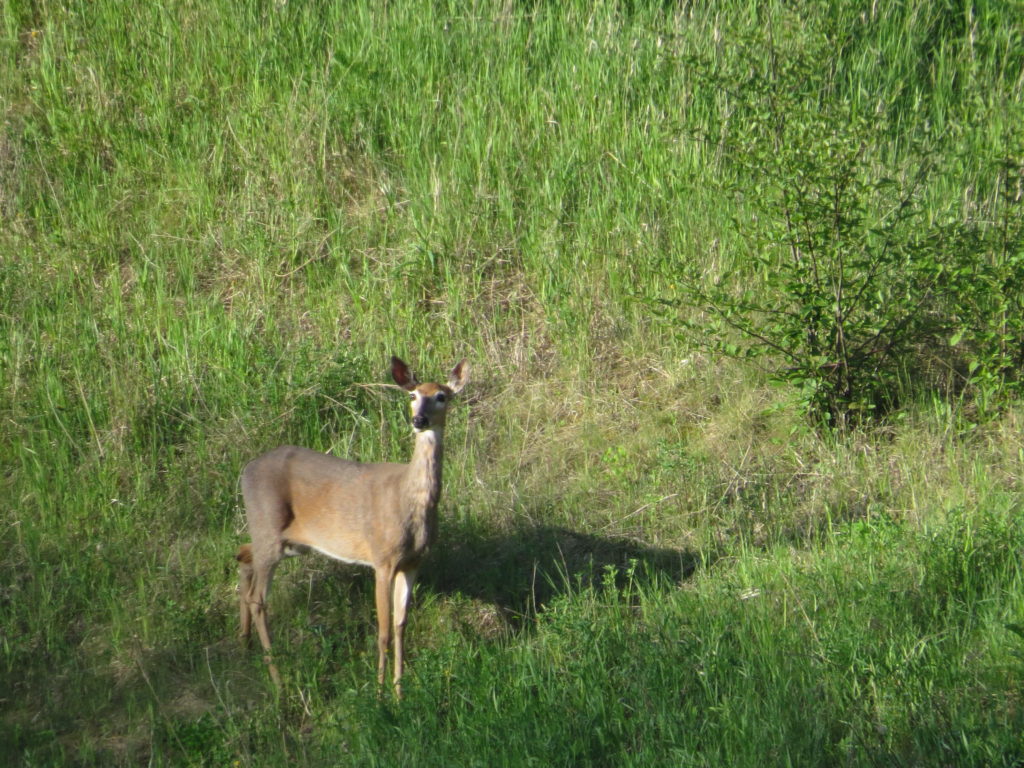
There are so many small things in life that we often overlook, deeming them trivial or insignificant. There are other things that are in plain sight, and we never even notice them. And while our brains cannot possibly register and keep track of ‘everything,’ I wonder what we miss or dismiss that is actually substantial and meaningful. The small water of Mission Creek was actually the water of life for the forest valley and all its inhabitants—all a part of the big view. Often when we think there is ‘nothing to see,’ there is actually much to see, and it is gratifying manna for our lives. And that makes for a very good day!
Denise, one of the gifts you regularly give me is helping me to see the little things in plain sight in the natural world that I just walk past. You have done it again here. Thanks!
So glad to hear, Bob! If you are on Instagram, follow me there for more pictures! (I just got started on that!)